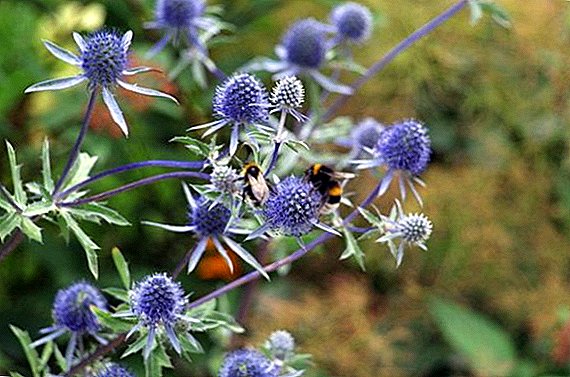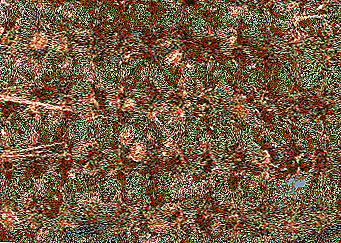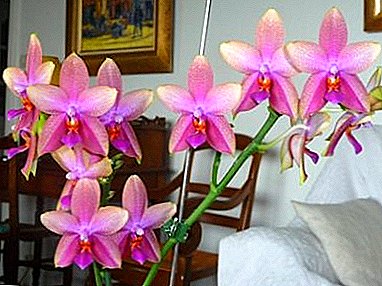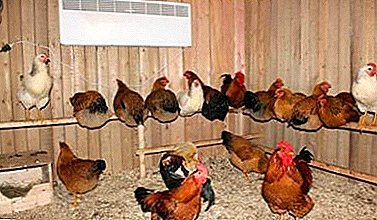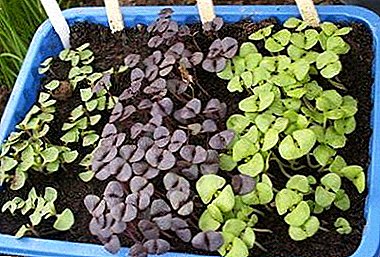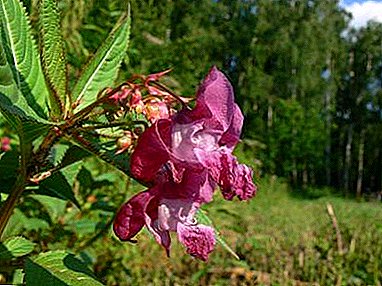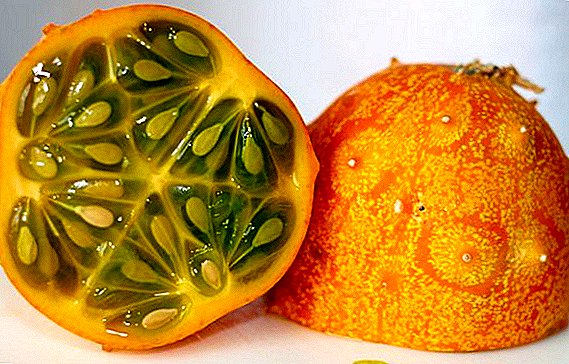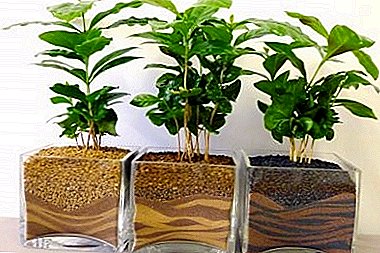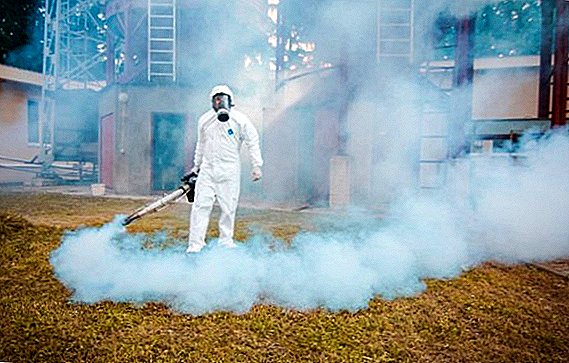 With the development of scientific and technological progress, a variety of methods for treating premises and materials aimed at the destruction of pathogens and other pests have found widespread use in agriculture and industry. One of the popular methods of such orientation is fumigation. In this article we will talk in detail about it, describe the various types of fumigation works and name all the advantages of this procedure.
With the development of scientific and technological progress, a variety of methods for treating premises and materials aimed at the destruction of pathogens and other pests have found widespread use in agriculture and industry. One of the popular methods of such orientation is fumigation. In this article we will talk in detail about it, describe the various types of fumigation works and name all the advantages of this procedure.
What is it
Fumigation is the process of eliminating a variety of pathogens and pests with various toxic gases or vapors. Substances from which these vapors or gases are formed are called fumigants. For the formation of these vapors use special devices, which are called fumigators. 
Where spend
Fumigation is used for the purpose of disinfecting and getting rid of insects in many industrial facilities, in gardens, during harvesting, for the purpose of its most long-term preservation, as well as in the room where such a need arises.
Learn how to get rid of insects such as thrips, golden-eyed, weevil, whitefly, springtail, rapeseed beetle, ants, Coot beetles, cruciferous flea, moss, moth, cockroaches, cabbage soup, wasps.
This manipulation can be performed practically in any place and under any conditions, however, it requires certain skills and protection of the person who conducts it.
The simplest and most well-known - but, alas, not always an efficient way - is the treatment of premises with the help of gas cartridges (for example, "Dichlorvos") containing highly volatile liquid.
Practically all export and import products are also subjected to this procedure, and sometimes even food. 
Did you know? At present, the use of dichlorvos is generally prohibited - it was replaced by substances that are safer for humans, the so-called pyrethroids. However, the word "Dichlorvos" has become so popular that it is often used as a trade name, without any connection with the specific contents of the can.
Who conducts
To perform this procedure, you can hire a specially trained team of specialists who will perform everything qualitatively and in a short time, however, it must be remembered that for some time it will not be possible to enter the room that has been fumigated.
You can not also eat and processed foods.and contact with the processed materials immediately after the procedure.
If you have all the necessary chemical protection, as well as materials necessary for manipulation, you can do it yourself. It is only necessary to remember that it is imperative to carefully monitor personal safety and thoroughly wash hands and face immediately after the procedure is completed. 
Procedure
The process itself may vary depending on what kind of substance it is performed, for what purposes, against which pests and which materials should be processed.
In order not to separately describe each of the many possible combinations, we describe the procedure for fumigating a room using one of the most popular fumigants, phosphine:
- First, it is necessary to remove from the premises all items and products that could potentially be damaged during this procedure.
- Then a special cap is put on the room, an awning (if there is such an opportunity), which would prevent the release of active substances.
- The fumigant is introduced into the room, based on their previously calculated dosages.
- After that, the room is kept in a sealed state, without circulation of air masses, for 3-7 days, depending on which specific pathogen or pest should be destroyed during the procedure.
- This is followed by degassing (weathering of the fumigant), which, according to the regulations, should last no less than 2 days.
- At the end, the completeness of degassing is measured using indicators, and in case of a satisfactory result, the room can be put back into operation.

Did you know? To avoid undesirable insects getting into your rooms, sometimes it is enough just to change the classic incandescent bulbs to LEDs with a soft white color, such illuminators attract insects much less.
Fumigation method
Modern companies offer several different methods of this process. The most popular and most commonly used in relation to various food products (nuts, tea, grains, etc.) is the surface method.
It involves the scattering, indentation or rubbing of the fumigant in tablets or granules throughout the treated area. There are, however, some more techniques that should be given attention.
Sounding
There are two types of this method: short and deep sounding. As the name implies, they differ primarily in the depth of the product (most often it concerns grains) that the fumigant will be located. 
Most often, a combination of these sensing techniques is used, since it is this that allows us to achieve the most stable and adequate results.
The methodology of this type of fumigation is that using a special probe (a long metal stick with a fumigant carrier at the end), a predetermined amount of fumigant is introduced into the product (most often grains), which negatively affects all pathogens, thereby extending the life of the product.
Typically, a single portion of the fumigant is not enough for adequate protection and prevention of disease in all the required number of products, so the process is repeated the required number of times.
Gassing or fumigation
This technique is more widespread because of its versatility. With its help, you can handle premises, gardens, food, building materials (including wood) and many other items. 
A significant disadvantage of this method of processing is its great danger to humans compared with the surface method and the method of sensing.
The fumigant is placed in a special apparatus, which brings it to a gaseous or vaporous state, which largely depends on what kind of chemical structure is inherent in the substance in normal conditions of its storage.
Next, the gas or vapor is uniformly applied to the desired surface or materials, after which it is left for a certain period of time in sealed conditions.
Important! A prerequisite before using any room or material fumigated by a fumigant is its adequate degassing.

Used drugs
In terms of chemistry, fumigants are pesticides, the main component of which must be non-toxic or slightly toxic to warm-blooded animals, but at the same time display strong insecticidal properties.
Now on the territory of the post-Soviet states, two fumigants are permitted for use - phosphine and methyl bromide.
Phosphine
A characteristic feature of this gas is its pronounced smell, reminiscent of the smell of rotten fish. It is completely colorless, it is very poorly soluble in water and does not react at all with it, which makes it an ideal gas for the treatment of rooms in which humidity is elevated (for example, cold rooms).
It is very toxic to the nervous system of insects, and in high concentrations can also affect the brain of warm-blooded organisms. 
Now this fumigant is successfully used for the purpose of processing various containers, large warehouse premises (both empty and with goods inside), as well as for band processing of grain and other food products.
As a rule, preparations for fumigation contain magnesium phosphides (“Magtoxin”, “Magnicum”) or aluminum (“Fotoxin”, “Alphos”, “Dacfossal”) in capsules, granules or tablets. Under the influence of atmospheric air, a chemical reaction begins in them, as a result of which phosphine gas is released.
Methyl bromide
This organic substance without a pronounced odor dissolves very well in water at a temperature of 17 ° C. This substance is very toxic to the nervous system of any organisms, and can very quickly lead to paralysis of both insects and warm-blooded organisms if they inhale too high a concentration (over 1 mg / m3).
This fumigant is widely used for the treatment of various crops (nuts, dry fruits, grains, etc.), as well as for the processing of used clothing. Sometimes it is also used to prevent the occurrence of various bacterial and insectoid invasions in storage facilities. 
The drug is distributed in liquid form in hermetic containers ("Metabrom-RFO").
Important! Despite the fact that fumigation works do not require special qualifications and everyone can nominally perform them, it is better to seek help from specialists. Only they can do everything really high quality, quickly and safely.
Types of fumigation treatment
In general, the processing of different objects using fumigation is not very different. However, there is its own, slightly different specificity.
Grains
As already mentioned, the grain is predominantly processed using a combination of short and deep sensing. In this case, the probe with tablets or granules of the drug is injected at the required depth according to the protocol and left them there, taking out the probe in order to lay the next batch of fumigant at the calculated distance. 
Of premises
Most often the premises are treated with aeration - this method allows to achieve the most adequate and long-lasting results, while the cost of such a procedure will be much less than with a zonal or surface treatment method.
A prerequisite for successful treatment of premises is their sealing before the introduction of gases. Be sure to also remember the need for degassing, which is designed to save your health.
Soils
Soil fumigation is most often carried out using the surface method. The substance is scattered at a certain distance from each other in the form of capsules, tablets or granules.
This type of tillage can significantly increase the yield of your beds, while not doing absolutely no harm to plants, since most fumigants are not phytotoxic. 
Wood
The peculiarity of wood is that it can be subjected to this procedure in any form convenient for the owner - it all depends on where it is at the time of processing.
If the wood is in the room, it is recommended to carry out gassing, and if in the open air or at the stage of transportation, it is better to use the surface method.
Tara
Tara is best treated with aeration from the inside. At the same time, after a sufficient amount of fumigant is injected into it (it is calculated based on the initial volume of the container and the activity of a particular substance), the container must be tightly and tightly closed.
Reuse of the container after fumigation is possible only after careful degassing. 
Frequency of work
It is impossible to establish any permanent schedule for this procedure, since it is often carried out according to strict indications and regulations, which differ in different enterprises and warehouses.
Sometimes fumigation is prescribed due to the fact that a special sanitary-epidemic body reveals a violation in the form of the presence of a particular disease-causing form or an insect in a room or product.
In general, for prophylactic purposes, in the absence of any “acute” indications for the procedure — clearly visible signs of the appearance of insects or diseases — as well as in the absence of any indications from government supervisors, this procedure is recommended to be carried out no more frequently than once every six months. 
Benefits
The main advantage of fumigation for the person concerned is the preservation in due amount and quality of all its products, the prevention of the occurrence of various diseases that may lead to damage to the goods, as well as the absence of possible claims from the state services controlling these processes.
With regard to the treatment of premises - this procedure allows you to completely get rid of various insects and pathogens that will save you and the workers who will work there, health, and perhaps even life.
So, we hope that this article answered your questions about such a procedure as fumigation. Responsibly approach the issues of prevention of damage to your product - and consumers will be grateful to you.


